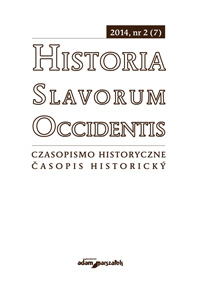Zeměpanské konfi rmační listiny pro česká a slezská města do 1419 roku
Confirmatory documents issued by the rulers for the Bohemian and Silesian cities until 1419
Author(s): Tomáš VeličkaContributor(s): Agnieszka Tokarczuk (Translator)
Subject(s): History, Law, Constitution, Jurisprudence, Middle Ages
Published by: Wydawnictwo Adam Marszałek
Keywords: Bohemia;Silesia;diplomacy;Middle Ages;
Summary/Abstract: The author has attempted to provide a holistic view of the practice of confirming the documents for the royal and princely towns in the area of Bohemia and Silesia (the area of Moravia has already been explored in this respect) by the ruler. Confirmatory documents formed an integral part of the production of the writing offices of the rulers of both examined territories, i.e., the Czech kings and the princes of Silesia. Whilst in the case of Bohemia the issuer is unambiguous (the King of Bohemia), the issuers from the region of Silesia could have included the Silesian princes (including the Bishop of Wrocław), the Czech king and the royal starosts (governors) in the principalities directly subject to the Czech ruler as issuers. Generally, confirmatory documents are deemed to have been diplomatic acts which confirmed the existence of a legal reality. These included not only documents (alternatively confirmatory documents issued in the form of a mandate), whereby the rulers confirmed the prevailing legal acts of their predecessors, but also those which confirmed acts of their subjects. A selection of merely one group of recipients was deliberate, notwithstanding the resultant, apparently incomplete image. Such an approach has its advantages, inasmuch as it allows the examination of the resources in a more compact form, and what is more, throughout two territories to some extent shaped by various traditions.The author focuses largely on several issues related to confirmatory documents, notably on the differentiation between confirmatory and dispositive documents. Both types are to some extent convergent, and sometimes the dispositive formula is present in some confirmatory documents. Furthermore, dispositive documents are sometimes deemed to be one of the degrees of confirmation. Nevertheless, in most cases notable is a variance in the usage of both types of documents. First, the author presents a quantitative review of the number of documents issued for particular towns. Was there a direct principle saying that the more important and richer the town, the more confirmative documents are found? How can we measure the ‘validity’ and ’wealth’ of each of the analysed towns? Which towns can boast of confirmations issued by the majority of successive rulers and which have to be satisfied with merely a few acts? This question needs to be explored also from a different point of view: we need to determine the role of confirmatory documents in the policy of the rulers towards the towns as well as how it was reflected in the different phases of the duke’s (king’s) reign.The motives behind issuing individual acts of confirmation and the question what forced the towns to make efforts to have their privileges confirmed are essential elements of the author’s inquiry. The reasons might have been both external, namely the position of the town’s ruler, and internal – problems inherent in the functioning of a given centre.
Journal: Historia Slavorum Occidentis
- Issue Year: 2014
- Issue No: 2
- Page Range: 212-233
- Page Count: 22
- Language: Czech

